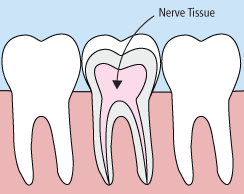Sealants | Fluoride | Mouthguards | Crowns | Extractions | Fillings | Pulp Therapy | Thumb Sucking | DENTAL EMERGENCIES
For more information concerning pediatric dentistry, please visit the website for the American Academy of Pediatric Dentistry.
Sealants
Sometimes brushing is not enough, especially when it comes to those hard-to-reach spots in your child’s mouth. It is difficult for a toothbrush to get in between the small cracks and grooves on your child’s teeth. If left alone, those tiny areas can develop tooth decay. Sealants give your child’s teeth extra protection against decay and help prevent cavities. Our sealants do not contain Bisphenol A, Bis-GMA, or BPA derivatives.
Fluoride

Fluoride is effective in preventing cavities and tooth decay and in preventing plaque from building up and hardening on the tooth’s surface. A fluoride treatment in a dentist’s office takes just a few minutes. After the treatment, your child may be asked not to rinse, eat, or drink for at least 30 minutes in order to allow the teeth to absorb the fluoride. Depending on your child’s oral health or the doctor’s recommendation, a fluoride treatment may be required every three, six, or 12 months.
Mouthguards

Whether your child wears braces or not, protecting his or her smile while playing sports is essential. Mouthguards help protect the teeth and gums from injury. If your child participates in any kind of full-contact sport, the American Dental Association recommends that he or she wear a mouthguard. Choosing the right mouthguard is essential. There are three basic types of mouthguards: the pre-made mouthguard, the “boil-and-bite” fitted mouthguard, and a custom-made mouthguard from the dentist. When you choose a mouthguard, be sure to pick one that is tear-resistant, comfortable and well-fitted for your mouth, easy to keep clean, and does not prevent your child from breathing properly. Your dentist can show your child how to wear a mouthguard properly and how to choose the right mouthguard to protect his or her smile.
Crowns(tooth-colored or stainless steel crown)

Crowns are most often used for teeth that are broken, worn, or have portions destroyed by tooth decay. We offer white Zirconia Crowns as an alternative option to stainless steel crowns.
Extractions

There are times when it is necessary to remove a tooth. Sometimes a baby tooth has misshapen or long roots that prevent it from falling out as it should, and the tooth must be removed to make way for the permanent tooth to erupt. At other times, a tooth may have so much decay that it puts the surrounding teeth at risk of decay, so the doctor may recommend its removal.
Fillings

We are an amalgam-free office. We use bio-compatible tooth color filling materials for all our fillings.
Baby Root Canals - Pulpotomy

When a tooth has a deep cavity, bacteria can enter the pulp tissue and germs can cause an infection inside the tooth. If left untreated, an abscess may form. We will discuss options with you to determine which options may be the best for your child.
Non-Nutritive Habits: Thumb sucking, Pacifier sucking
Please contact us to see how we can help.
Dental Emergencies

- Toothache:
- Clean the area of the affected tooth. Rinse the mouth thoroughly with warm water or use dental floss to dislodge any food that may be impacted. If the pain still exists, contact your child's dentist. Do not place aspirin or heat on the gum or on the aching tooth. If the face is swollen, apply cold compresses and contact your dentist immediately.
- Cut or Bitten Tongue, Lip, or Cheek:
- Apply ice to injured areas to help control swelling. If there is bleeding, apply firm but gentle pressure with a gauze or cloth. If bleeding cannot be controlled by simple pressure, call a doctor or visit the hospital emergency room.
- Knocked-Out Permanent Tooth:
- If possible, find the tooth. Handle the tooth by the crown only. DO NOT TOUCH THE ROOT. DO NOT clean with soap, scrub, or handle the tooth unnecessarily. If necessary, give the tooth a quick, gentle rinse with cold milk. Try to reinsert the tooth in the socket as soon as possible. Have the patient hold the tooth in place by biting on a gauze or a clean cloth. If you cannot reinsert the tooth, transport the tooth in a cup containing the patient’s saliva, cold milk, or “save-a-tooth” solution, NOT WATER. The patient must see a dentist IMMEDIATELY! Time is a critical factor in saving a tooth.
- Knocked-Out Baby Tooth:
- Contact your pediatric dentist. Unlike with a permanent tooth, the baby tooth should not be replanted due to possible damage to the developing permanent tooth. In most cases, no treatment is necessary.
- Chipped/Fractured Permanent Tooth:
- Time is a critical factor, contact your pediatric dentist immediately so as to reduce the chance for infection or the need for extensive dental treatment in the future. Rinse the mouth with water and apply a cold compress to reduce swelling. If you can find the broken tooth piece, bring it with you to the dentist.
- Chipped/Fractured Baby Tooth:
- Contact your pediatric dentist.
- Severe Blow to the Head:
- Call 911 immediately or take your child to the nearest hospital emergency room.
- Possible Broken or Fractured Jaw:
- Keep the jaw from moving and take your child to the nearest hospital emergency room.
Read more about how to prevent dental emergencies during recreational activities and sports with mouthguards.

